Use These Varieties If You’re Container Growing Beetroot Says Peter Lickorish

VEGETABLES > BEETROOT > CONTAINERS
Reviewed By PETER LICKORISH

Peter is a Horticulture Lecturer and self-employed Horticulturist, with a passion for diverse areas of the industry - from garden design to the science behind plant growth and propagation. He has completed the Royal Horticultural Society’s Master of Horticulture (MHort) Award and lectures on RHS courses at Bedford College.
Contributions From EMILY CUPIT

Emily is a Gardening Writer, Photographer and Videographer from Derbyshire, UK. She is the Founder of Emily's Green Diary - a community of more than 75,000 people who share in her gardening journey.
IN THIS GUIDE
BEETROOT GUIDES
Container Growing
Harvesting
Sowing
Beetroot is a delicious root vegetable that probably deserves more recognition than it gets.
It can be boiled and tossed in cold salads, cooked in pot roasts, and stewed and pickled. And – of course – there’s borscht.
But that’s only the root vegetable – actually, Beetroot is a ‘two for the price of one’ veggie.
The leaves are tasty and these leafy greens too can be tossed in salads, cooked like spinach, or serve as an ingredient in stir-fries.
Beetroots have been grown for many centuries in cottage gardens in Central and Eastern Europe.

In comparison, this root veggie has made its appearance relatively recently in British gardens.
Recently or not-so-recently, we do know that Beetroots are grown in many a British garden, but one question remains.
Can You Grow Beetroot In Pots?
Yes – Beetroot is grown very successfully in pots.
Though persons who have a garden of their own may not care whether or not Beetroot can be grown in pots, if you live in a townhome or a high-rise flat and would like your own ‘garden fresh’ beetroot, we lay out how you can grow this earthy, mouth-watering root vegetable on your patio or balcony.
Choosing Containers
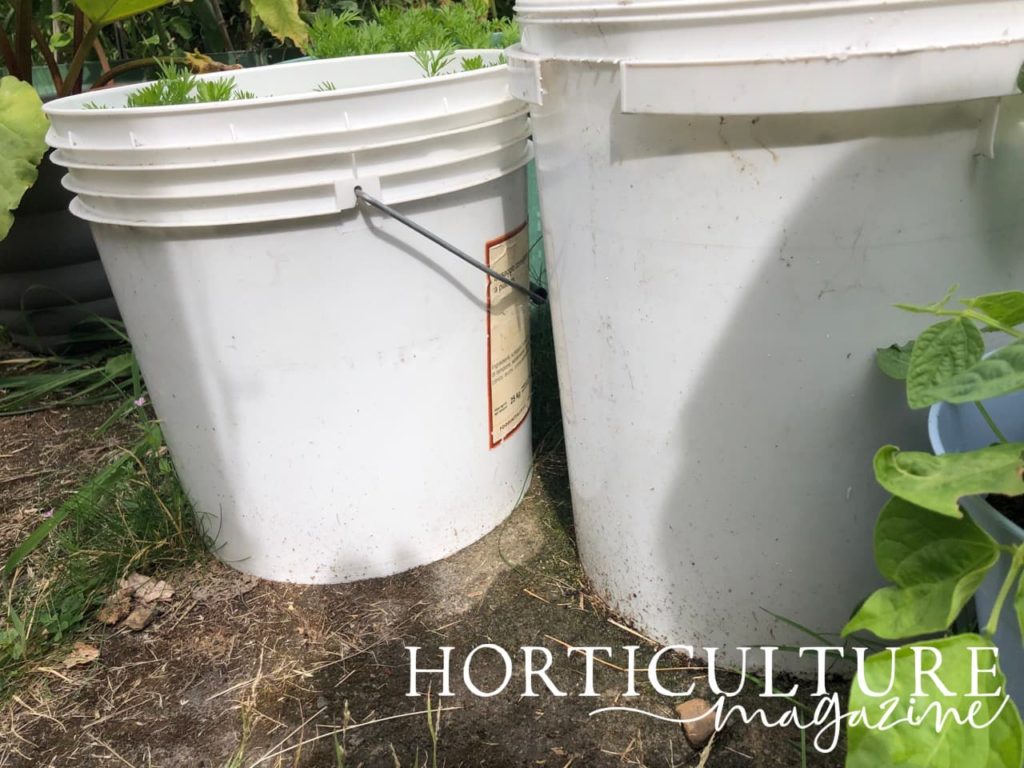
The pot should be at least 20cm deep.
A standard 10-litre pot is 22.5cm deep so this is the smallest size you should choose.
A 15-litre pot that is 30cm deep would be advisable.
That said, you can grow small cultivars, especially if you will harvest them early as ‘baby beets,’ in containers even smaller than 10-litre ones.

A planter or a trough is an excellent container to grow beetroots in as long as it is at least 20cm deep.
Pot or planter, the container should have drainage holes.
Just as you need to choose a container of the right size, where root vegetables are concerned you also need to choose a cultivar that is suitable for container growing.
‘Red Ace’, ‘Kestrel’, ‘Avalanche’, and ‘Moulin Rouge’ are the best bets for beginning gardeners who would like to grow Beetroot in containers, and they are especially good choices when you want to grow Beetroot in a less-than-adequate container.
Aim for rounded and not cylindrical varieties.
Compost For Beetroot
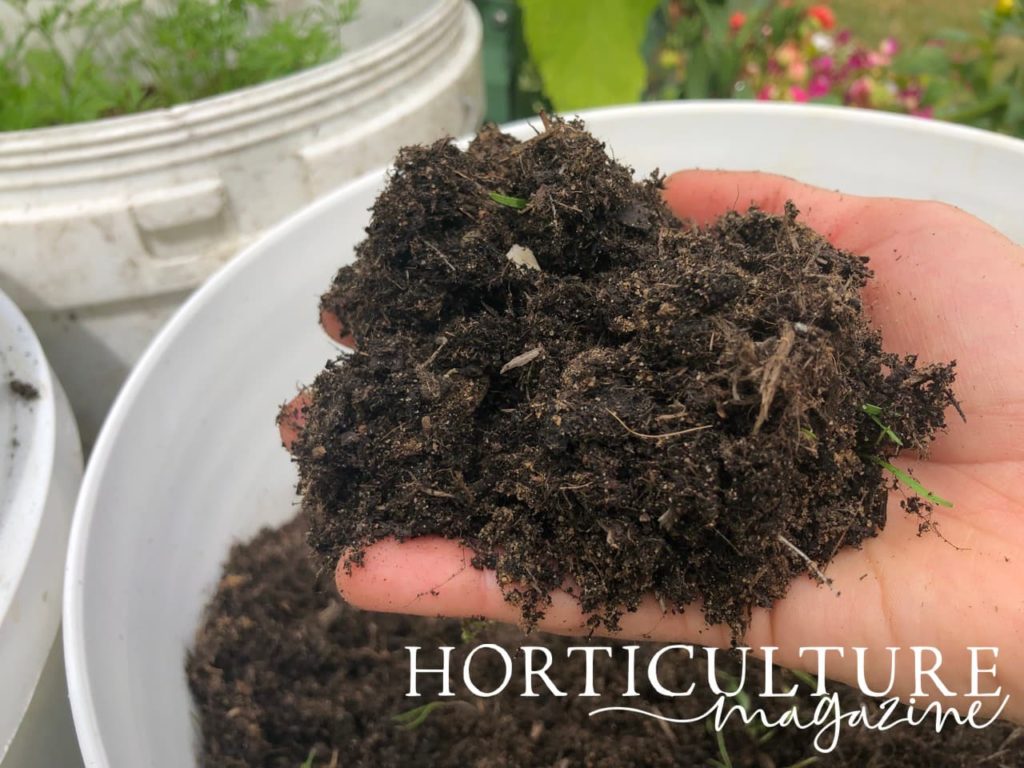
Though you can prepare your own soil, a potting compost is the hassle-free way to grow Beetroot in containers.
John Innes No 3 mixed with either Miracle-Gro Nature’s Care or Westland Multi-Purpose Compost is a good choice.
If you prefer making your own soil, to grow Beetroots in containers start with a base of sandy, chalky soil, add grit to assure good drainage, and mix in well-rotted cattle manure, well-rotted chicken manure, and organic compost in about equal quantities.
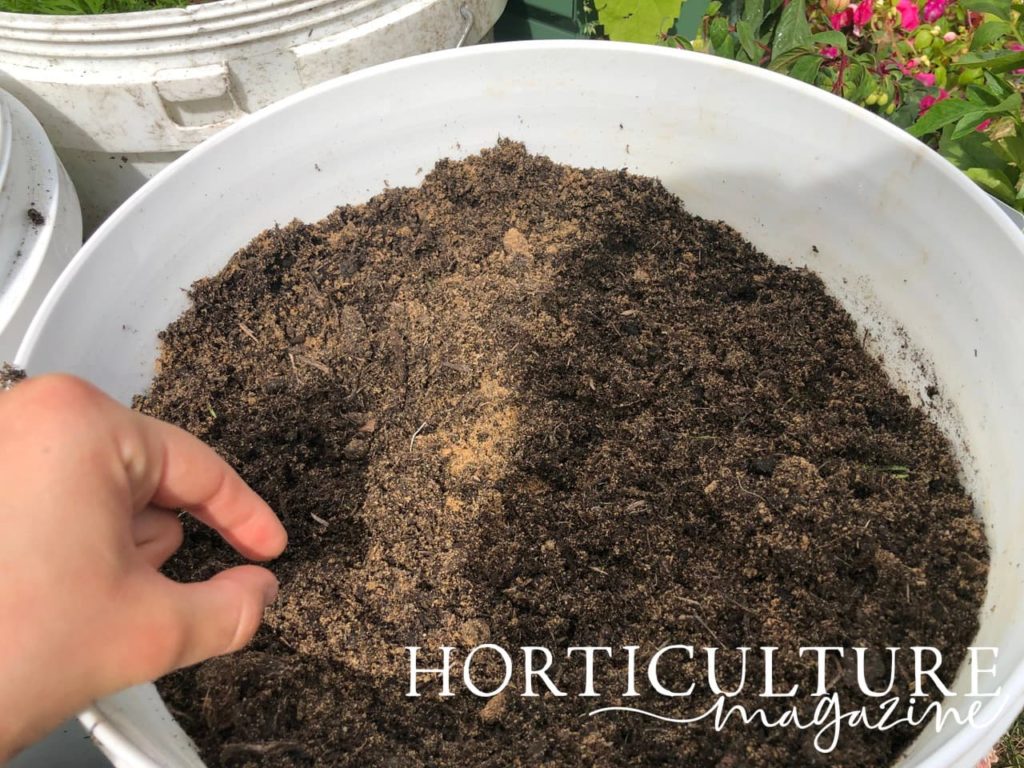
Regardless of whether you make your own soil or use a branded compost, the important points are that the soil must be free draining, it should be light and friable, and of a pH level in the slightly acidic range, i.e. 6.1-6.5.
Though a pH anywhere from 5.5-7.0 is certainly acceptable.
Potting Up & Transplanting
Potting up or transplanting beetroot is to be avoided like the plague – well, not quite but you get the point.
Beetroot, like many root veggies, are averse to being potted up or transplanted.
Simply sow the seeds in a container of the proper size to begin with.
“Pots usually have to earn their keep in small spaces,” shares Peter.
“For maximum decorative impact, you could combine the dark red leaves of ‘Morello’ with the yellow-touched leaves of ‘Boldor’.”
How Many Can You Plant Per Pot?
First, bear in mind that except for a few relatively recent cultivars, most Beetroot cultivars ‘seeds’ contain 3 or 4 real seeds per ‘seed’.
This is because Beetroot seeds are multigerm seeds, which is where each ‘seed’ contains multiple embryos.
You’ll get perhaps 3 times as many plants as seeds sown.

The number to sow also depends on the size of the pot and on what you want from your crop.
“If the quantity is the goal, sow thinly across the top of the pot and cover with a layer of compost around 2cm deep,” shares Peter Lickorish, a Lecturer in Horticulture with 5 years of professional experience.
“You’ll get a good crop of seedlings and you can thin these to a third, once they’re 3cm high, washing and eating the thinnings.”
“The rest can be harvested later as baby beets, and a couple left behind can develop into golf-ball size roots.”
If aiming for larger roots, we suggest that you grow two, perhaps three, Beetroot plants per pot of 15 or 20 litres volume, for which you would sow three seeds in a triangle shape.
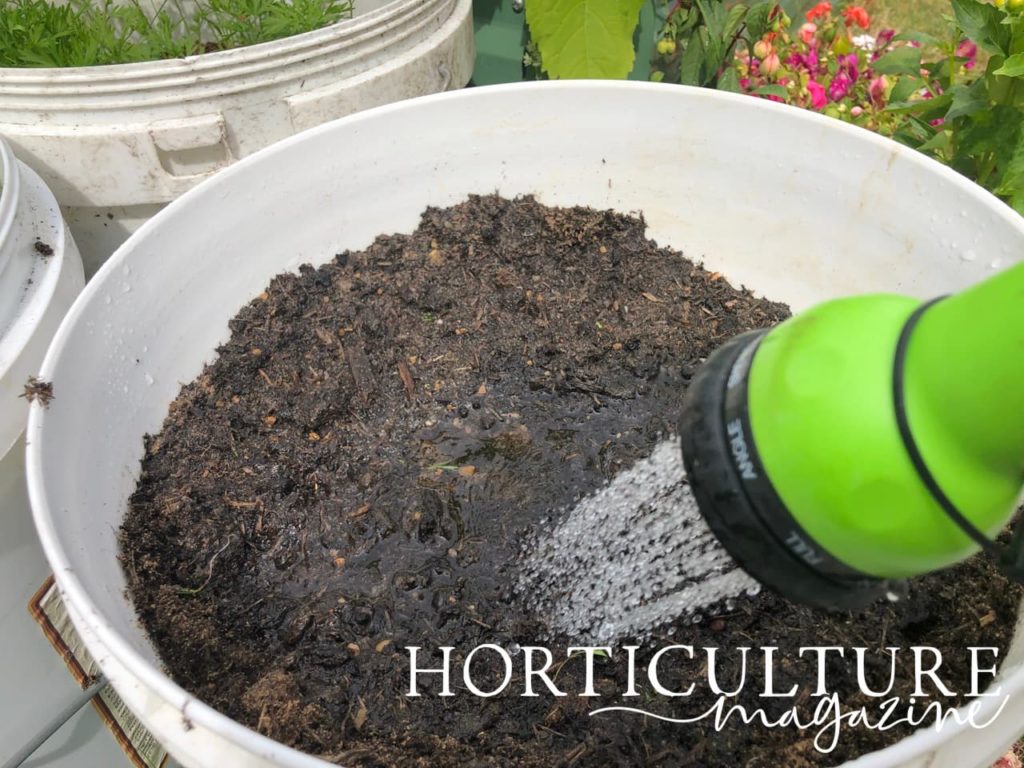
If the seeds are multigerm, you would thin them to one plant per seed, after germination.
If you intend to use a rectangular planter or trough you can plant multiple seeds and grow multiple plants, albeit in a single row.
As a rule of thumb, divide the length of the planter or trough in centimetres by 10, rounding down or up, and subtract 1 from the result.
That is how many larger Beetroots you can grow in that planter.
Caring For Potted Beetroot Plants
Keep your containers in a spot where they will enjoy full sun – the more, the better, where Beetroots are concerned.
Water seeds and seedlings every day with a watering can with a rose.
As the plants grow, the frequency of watering to every two or three days.
Keep the soil moist but do not let it get waterlogged – if the top 2-3cm of soil has dried out, it is time to water.
Be on the lookout for weeds and pull them up as soon as you spot them.
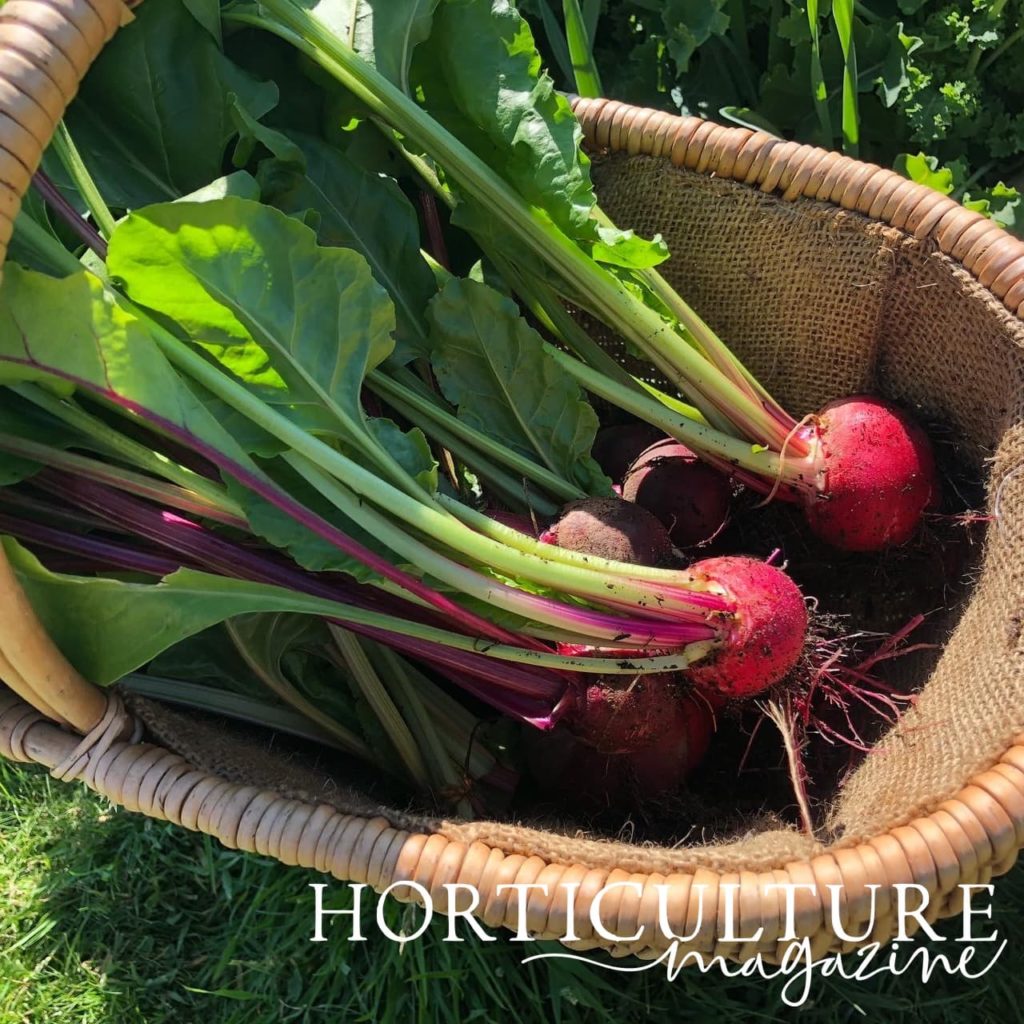
“I find that aiming for young or baby beets gets the most productivity out of the container, spreading the harvest,” adds Peter.
“You could even pair them with salad onions in a larger container.”
You may hear that Beetroots benefit from a high-phosphorus fertiliser such as bonemeal and this is correct, but this will not be easy to apply in the correct volume in containers and you run the risk of burning the roots.
The easy and safe option is to apply a balanced liquid fertiliser once just after the seeds have sprouted and then again after about four weeks.
Miracle-Gro Performance Organics Fruit & Veg in liquid form is a good bet; apply it according to the directions on the label.

